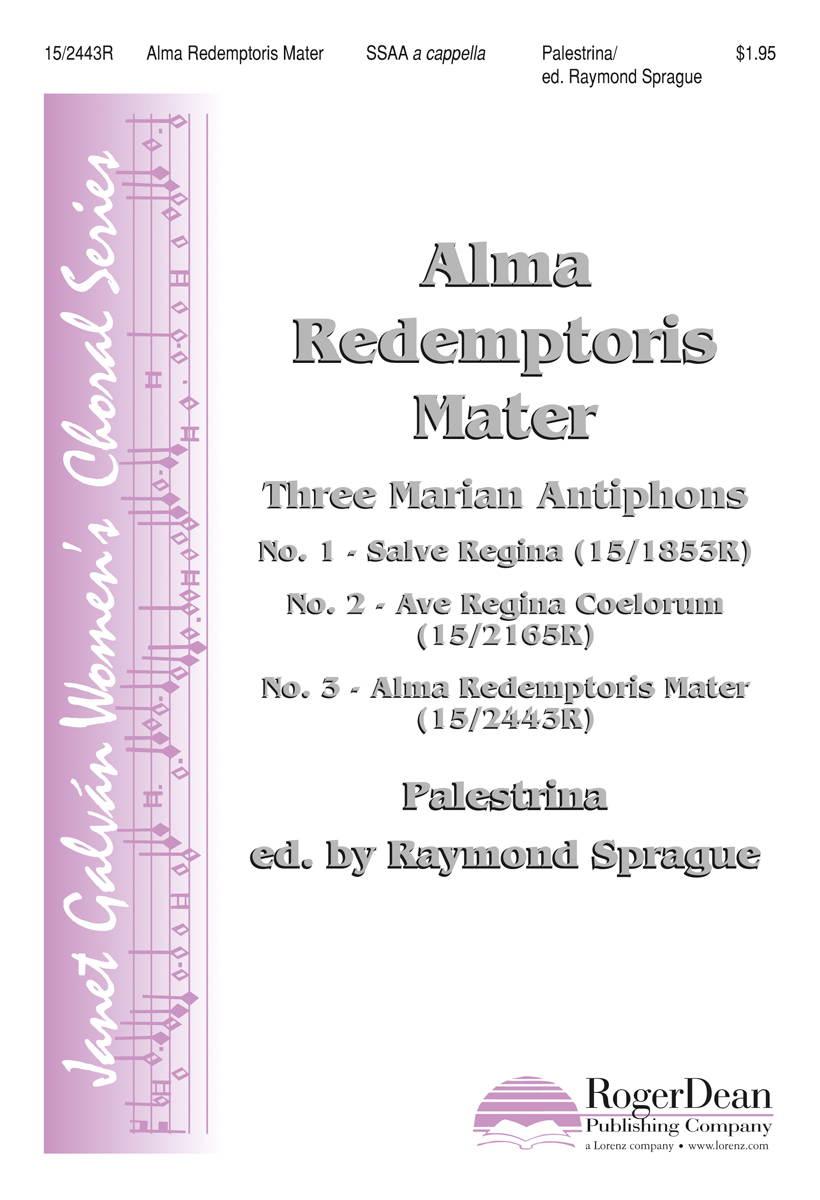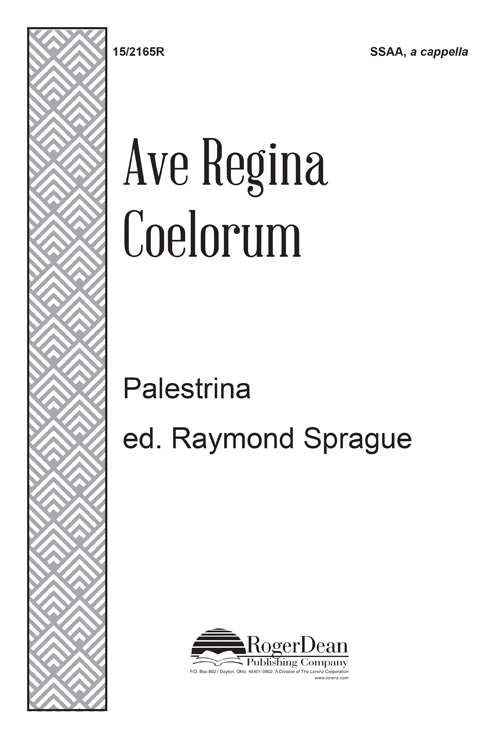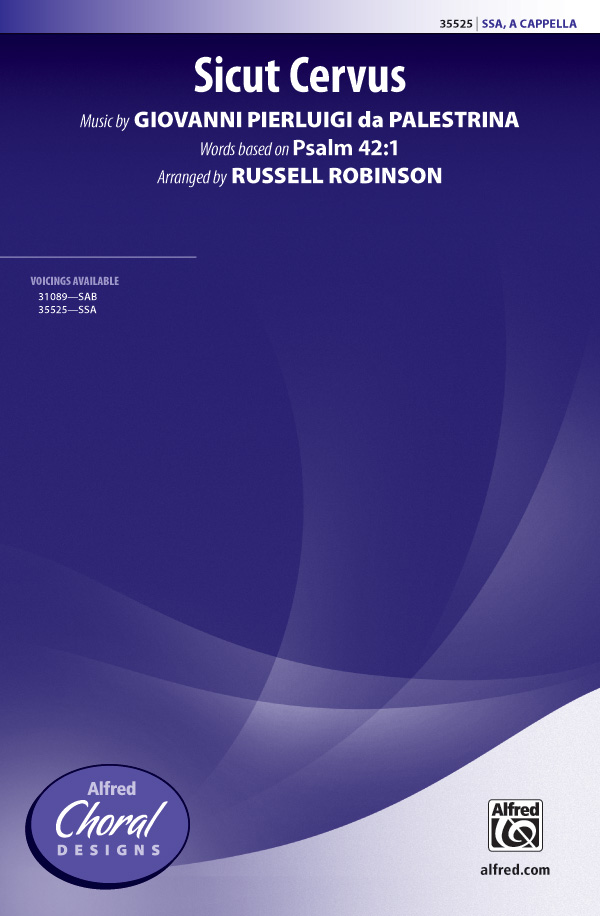In Celebration of the Human Voice - The Essential Musical Instrument
Home | Doo Wop | Barbershop | World | Contemporary | Christian | Vocal Jazz | Choral | Christmas | Instructional | Arrangements
Classical | Opera | Musicals | Personality | Young Singers | Disney | Videos | Songs | The Artists

Giovanni Pierluigi da Palestrina

He was nicknamed Il Prenestino. He had a tremendous influence on the development of Roman Catholic church music. He went to Rome at the age of fourteen to sixteen and is supposed to have studied under Claude Goudimel. In 1544-51 he was organist of the principal church of his native city (St. Agapito, Palestrina), and in the latter year became maestro di cappella at Cappella Giulia in Rome. By his first compositions -- three masses dedicated to Pope Julius III (previously the Bishop of Palestrina) -- he made so favorable an impression that he was appointed musical director of the Julian chapel. He held similar positions at various chapels and churches in Rome until his death (notably St. John Lateran (1555-60) and St. Maria Maggiore (1561-6)); and by his compositions, which are very numerous -- masses, motets, hymns, and others, of which only one-half have been published -- he produced a complete revolution in the history of church music, altering the existing chants in line with the recommendations of the Council of Trent. The Missa Papae Marcelli is generally counted among his greatest masterpieces. |
Arrangements | Trax CDs
Displaying 1-19 of 19 items.
A passionate Latin text, Adoramus Te embodies all of the purity and pristine beauty of Renaissance music. Sung a capella, this reverent masterwork may be used in concert, contest, or festival settings by school or church groups. Appropriate for high school children.
Arranger: John Leavitt
This piece is the third in the set of "Three Marian Antiphons for Treble Choir" by Palestrina and edited by Raymond Sprague. As in the first two pieces, the editor has provided a clean and uncluttered score in order to provide a canvas on which the informed conductor and well-trained choir can create a fresh and true interpretation of this beautiful Renaissance masterpiece.
This is the second of Three Marian Antiphons for Treble Choir. The first is "Salve Regina," also published by Roger Dean (15/1853R), and the third will follow next year. Written in two sections--the first, long and legato; the second, very rhythmic--this is sure to become a standard in the women's repertoire for colleges and festivals.
Arranger: Raymond Sprague
Blending scholarship and practicality, this performing edition of a Palestrina masterpiece can be performed a cappella. Or, employing the optional instrumental parts for strings in C, Alto and Bass clefs, and a keyboard part, it can be performed with whatever combination your situation calls for.
Arranger: Ryan Kelly
This antiphonal setting of the Gloria Patri by Palestrina may be performed by double chorus or chorus and brass. This stately and dignified work will enhance any sacred concert.Available separately: SATB Double Chorus and Optional Brass. Performance Time: Approx. 1:00.
This simple 3-Part canon offers an excellent introduction into a cappella Renaissance style. Available: 3-Part any combination.
Arranger: John Leavitt
Jameson Marvin, through his work with Harvard and Radcliffe, has re-established the importance of teaching polyphony in the modern choral classroom. This beautiful setting of the Magnificat by Palestrina has been editited by Dr. Marvin to accommodate modern notation, clefs and measure lines. He also maintains rhythmic groupings enabling the singers to move beyond the tyranny of the bar line and bring a beautiful and authentic performance to the stage.
Arranger: Jameson Marvin Performed By: Harvard Glee Club
Scored for SSATTB Choir. Edited for modern use by Henry Washington. Transposed a tone down from the original pitch.
This 4-part, a cappella piece by Palestrina has been edited expertly by Richard Proulx, who also provides a sung English translation in addition to the original Latin. A great selection for any Marian celebration.
This widely performed Renaissance motet is now available in an SSA edition. Transposed up a fourth from the original key of F major, the beauty of Palestrinais polyphonic writing is maintained while making it more accessible for treble choirs. Also available for SAB (00-31089).
Arranger: Russell Robinson
One of the masterworks of 16th Century sacred music, this elegant motet offers a deeply emotional experience as the phrases unfold in a rich outpouring of sound. Available separately: SATB, VoiceTrax CD. Duration: ca. 2:00.
Listeners will recognize the familiar chant melody, clearly outlined in the soprano, in this setting by Palestrina, sensitively edited by Tortolano. Perfect for the time of adoration that follows the Holy Thursday liturgy.
![]() Vocal Harmony Arrangements - Home
Vocal Harmony Arrangements - Home
Christian | Gospel | Standards | Musicals | Specialty | World | Barbershop | Contemporary | Vocal Jazz | Choral | Christmas
Mixed Voices | Female | Male | 8 Parts | 6 Parts | 5 Parts | 3 Parts | 2 Parts | Medleys | Solo | Folio Series | New Releases
Select a Category |
Want to Sing? - Find a Chorus Near You
List of Choruses by State | List of Choruses by City



















